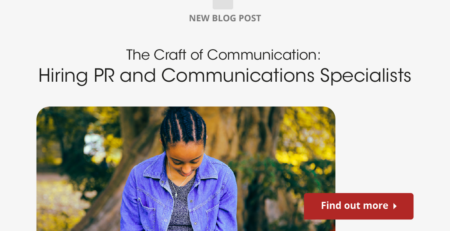Neuroscience & the 3 Laws of Branding
Branding aims to impact people’s choices. Whenever we decide on something, certain parts of our brain are hard at work recalling past experiences and associations we have between brands and the criteria we use to make a selection.
Neuroscience can help explain why certain branding strategies are more effective than others. Gaining a broad understanding of the science behind branding will give creatives a stronger idea of what tactics they should use to make strong and effective marketing materials.
For this article, we’re going to focus particularly on the way that neuroscience helps us understand the three laws of branding: the law of distinctive relevance, the law of coherence, and the law of participation.
Read on to find out exactly what these laws are and how neuroscience influences our understanding of them so you can build stronger branding.
The Three Laws of Branding
Researchers laid out three definitive laws of branding in a 2017 paper entitled,”Three Laws of Branding: Neuroscientific Foundations of Effective Brand Building.”
It’s a relatively short paper crammed full of information that is likely to be highly useful and thought-provoking for marketing professionals and other creatives in adjacent positions. We recommend you give it a read, but if you can’t, this article is a summary of that paper.
The three laws of branding are:
- The Law of Distinctive Relevance
Brands have to be relevant to the needs and desires of the potential user or client. That relevance has to be clear immediately – when people are selecting between brands, their decision is usually subconscious and happens very quickly.
This is the area of branding where you want to clearly demonstrate a link between the brand and things that are of personal importance to the potential buyer. Understanding what people’s primary factors are will help your products and services stand out during reflexive decision-making.
- The Law of Coherence
Repeating a specific brand message encourages the creation of networks whereby people associate the brand with certain attributes. If you want to create a strong link between the brand and a certain characteristic or perception, that association will have to be made repeatedly.
Connections should also be as specific as possible. It’s not enough to merely proclaim that the brand is good. It should stand out for particular cases, e.g. for being high-quality or uniquely effective at solving the user’s problem.
When creating a marketing campaign, all of the instances of brand interaction need to reinforce the same ideas so that people create the necessary associations to recall when they’re perusing competing brands. That’s the principle idea of the law of coherence.
- The Law of Participation
Many brands tend to forget about this third law or at least fail to implement it as effectively as they could. It’s a core part of how branding works, though. Essentially what this third law says is that the same association networks mentioned in the first two laws are made even stronger in participatory situations.
You may have already heard of participation branding, which encourages interaction between the brand and the customer. When the customer is engaged during branding efforts, they are more likely to create strong associations and recall them later.
Basically, marketing professionals who want to use all three laws of branding need to make sure to create ways to entice people to actively participate in brand engagement. Passive media channels like television and radio have had some success with participatory branding efforts in the past, but the internet is far better for them.

Memory, Neuroscience and Marketing
To understand how branding works, you have to understand something about how memory works, too. We’ve already covered how memory works in UX design. It has a similar effect on branding.
Think about those association networks mentioned in the three laws of branding. It’s memory that allows you to recall what you felt and thought about a brand when you first saw their messaging or heard about them from someone else.
Lived experience that informs your decision-making when you’re selecting between brands is also part of memory, as would be any experience you had using that brand’s products before.
According to some neuroscientists, memories are not simply stored and retrieved like files on a hard drive but rather created by neurons moving and connecting with one another. Neurons travel along nerves in our brain, which might explain why neuroscientists have found that even long-term memories can be created in one part of the brain and recalled by another.
What does this have to do with how branding works? Well, it has some pretty large implications. For one thing, it means that branding can’t be implanted in someone’s brain, so to speak. People don’t remember their memories the same way each time – memory creation and recall is a constant process and that means branding is too.
So creating the perfect marketing campaign can’t ever permanently cement a fixed perception of your brand in people’s minds. That’s great news for the creatives who make these branding materials and might worry about their job security in the future.
Dual-Process Theory for Branding
Neuroscience and marketing come together brilliantly when you make use of the dual-process theory. While it is a complicated theory to grasp in terms of the way it occurs in your brain, the takeaway for creatives is pretty easy to understand.
The dual-process theory explains how people learn skills. It tells us that our brains operate on two systems. System 1 is fast, impulsive, emotional, and subconscious, while System 2 is logical, slow, and conscious.
When you first start learning how to do something, you’re operating completely with System 2. You have to carefully put theoretical concepts into action and that has to be a deliberate, conscious process.
But as you get used to the task, you can perform it with less and less concentration. Think about learning how to walk or drive a car. Most people walk without thinking and, although it’s dangerous to do so, many multitask while they’re cruising in their cars as well.
Once something becomes second nature to you, it’s completed primarily with System 1. The goal of branding should be to have associations with the brand shift from System 2 to System 1 so that people unconsciously and immediately recall their associations with the brand without having to deliberate.
This is much easier said than done. It requires a consistent message repeated each and every time people interact with the brand. While in some respects the internet has made this kind of marketing push easier, it’s still easy to drop the ball.
Some companies that grow too quickly fail to ensure that all their various marketing efforts fit under one brand identity. According to the dual-process theory, potential users and customers are going to have to make careful considerations in System 2 before they decide to use a brand with a murky or weak identity. That could be enough for them to reach for a different product on the shelf.
Implementing the Three Laws of Branding
According to what we’ve learned so far, putting the three laws of branding to work can be approached in the following ways.
1. Embrace Interactive Structures
Buttons on the internet are clickable but that doesn’t mean whatever you place in front of viewers automatically qualifies as interactive. Consider the neurological component of every interaction – it should be engaging not only because it presents viewers with some kind of desirable item but because it prompts them to fully engage with the brand.
To do this, you need to provoke their curiosity. Approach this problem with an understanding of your audience and acknowledge that they are complex, intelligent people who will go to great lengths to investigate topics if the information is interesting.
That doesn’t mean everyone in the world will be intrigued with a comprehensive history of the pizza oven and thus buy a pizza from your restaurant. But it does mean that they can and often will interact with complex designs that engage their curiosity and allow them to explore.
Going back to that hypothetical pizza restaurant, you would probably have more luck with quick pizza recipes and an interactive program where they could build their own pizza before they order. Sure, it could look gimmicky and some people might just want to quickly order a pepperoni pizza and be done with it. But the right repertoire of pizza recipes could create an association between the brand and high-quality pizzas no matter what the actual order is.
2. Reinforce With Consistency
Redesigns and website facelifts are common tactics for brands and businesses that want to stand out against the competition. But changes like these could undermine your other branding efforts in the long run.
The second law of branding states that connections between brands and qualities are made stronger by repetition. Neuroscience and marketing talk aside, it just makes a kind of intuitive sense that impressions become strong opinions if they turn out to be true again and again.
That’s also how branding works. If your watch company is well-known for selecting the best metals and building its products with the finest craftsmanship, then advertising a cheap plastic watch as a convenient or budget option would do damage to the brand even if people still bought it.
Cohesion is vitally important to branding. Marketing teams spend lots of time and effort building the right brand identity and communicating these ideas to everyone in the company. Even outside media channels that want to use parts of the branding kit are given strict regulations about how they may do so in line with the branding strategy.
Quality is just one area where you need to remain consistent. Are you family-friendly or geared more toward adults? Are your products known for their luxury or their effectiveness? Budget items or long-term investments? All of these considerations must be made and reinforced by future branding.
3. Elicit Personal Responses
User research for marketing and design all too frequently has a fatal flaw: while they can engage people, get their feedback, and even take suggestions about what the next iteration of the product should look like, they simply leave out any room for people to demonstrate their personal connection with the brand.
Small, in-depth focus groups are great avenues for finding out this kind of information. But not every team will have time for that. If you can think up a way for people to demonstrate how they personally connected with the brand without focus groups, you can get a much greater insight into your clientele.
Enter social media. Companies who want to see how people are interacting with their brand can sponsor photo competitions and use things like hashtags that allow their users to show the world how they were able to use the products. From important services like health insurance to small things like backyard grills, seeing people have favorable interactions with brands boosts the overall perception of the brand with others as well.
But this is a two-way street. Have lots of clients leaving negative reviews or tagging your customer service on social media without having their problems resolved and your brand will take a serious hit.
4. Add Context to Your Branding
The more frequently your brand is brought to mind through associations with other things, the stronger its positive association will be.
Many marketing materials today seem devoid of context. Watch most daytime TV ads and it’s a one-off notification for a service that you can or cannot engage with. Once it’s gone, it’s gone.
Most of the companies and services advertising on television aren’t likely to be significantly invested in their own brand, of course. But they would still be better off adding a bit of context so people would be more likely to recall the commercial when they need the service advertised.
Law firms are a good example of this. They take a different tack – knowing that the individual commercial will be forgotten, they replay it throughout the day and also invest in other marketing materials like billboards to make sure people remember the name of that particular firm if they need an attorney.
They tend to do this with commercials that focus almost entirely on context. “If you get in a car accident, call [attorney’s name” is a common refrain in such promotional materials. And it works because they have context (car accident) and they repeat that concept in connection with the law firm or attorney’s name constantly.
Other brands can do this too. Show how your brand is temporally related to more of the daily activities that your target market engages in from day to day. If you’re selling pizzas, show how you can make dinner fun and unique. You’re a timesaver, so next time somebody needs dinner quickly, they’re more likely to recall your brand.
But repeating yourself too often can create an annoyance for people and negatively impact your brand in the end. Find the middle ground where you can create links between the brand and the daily lives of your customer base without inundating them with your branding material at every hour of the day and you’ll be in the sweet spot where they have positive associations that will actually encourage them to buy from you next time.
5. Build Trust With Your Branding
The combination of neuroscience and marketing isn’t meant to work like a thought-control exercise. It should simply help creatives understand how branding works and why.
So when you create branding materials, it should foster trust with the audience. Deep down, they know there’s a bottom line somewhere at the business. But with the right branding, you can show them that the company’s mission statement and philosophy are the main motivators for the company.
Another factor of trust-building is whether your product works as advertised. People love to hear testimonials that products work. While commercials with lots of customer testimonials might feel a bit old-fashioned today, social media and eCommerce have presented unprecedented opportunities to elicit testimonials in the wild, often with little or no cost.

Conclusion:
Neuroscience and marketing go hand in hand. Memory is created and retrieved by neurons and allows us to create associations between brands and ideas. The separation between two systems of thought as described in the Dual-Process Theory creates a space where long-term impressions can be recalled immediately and even unconsciously.
If you want to make the most of what neuroscience can tell us about branding, follow the tips in this guide. Assess your branding materials according to the three laws of branding and you’ll be creating the kind of brand loyalty other companies can only dream of.












